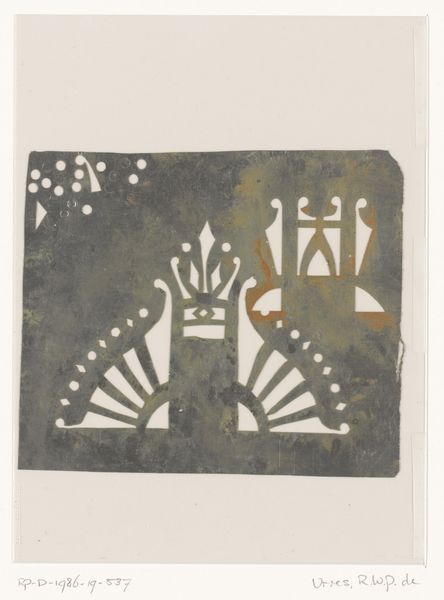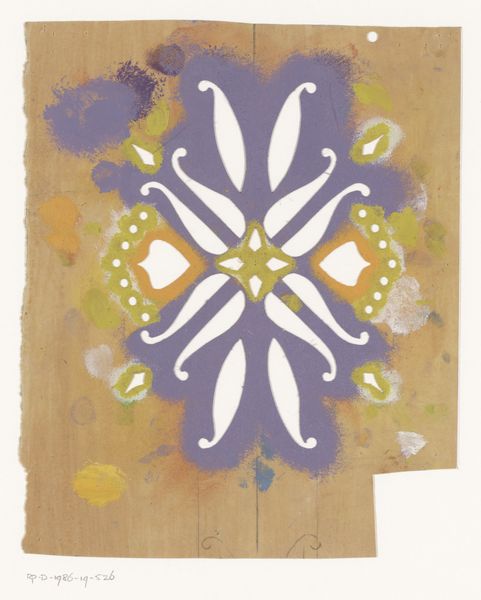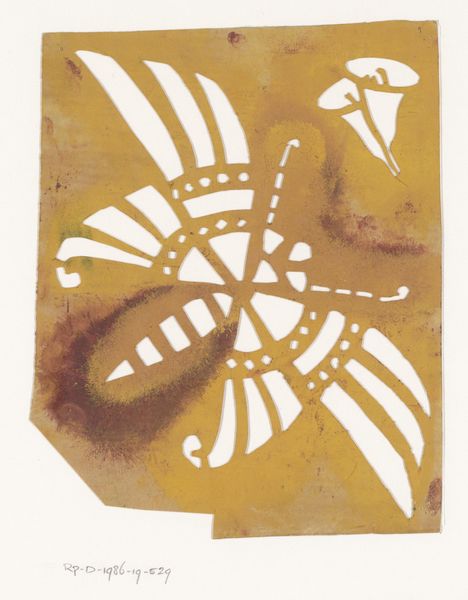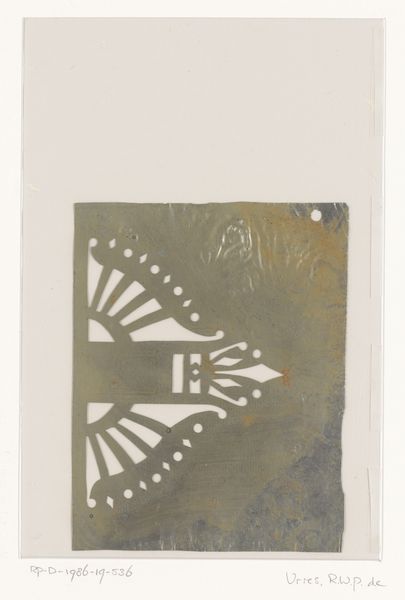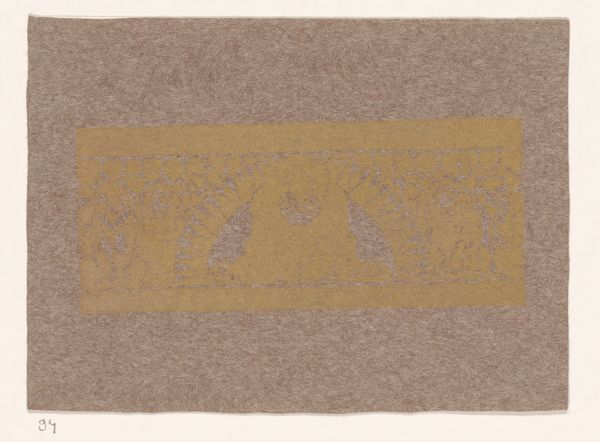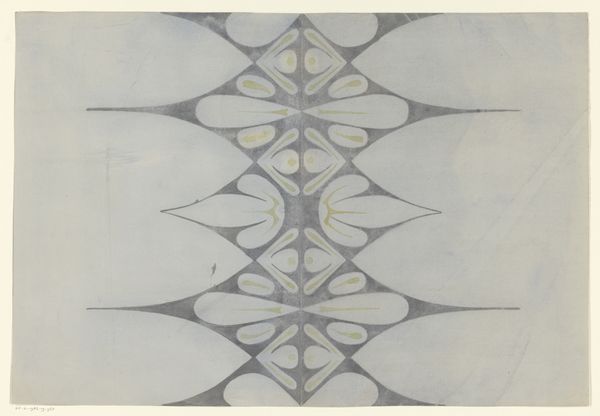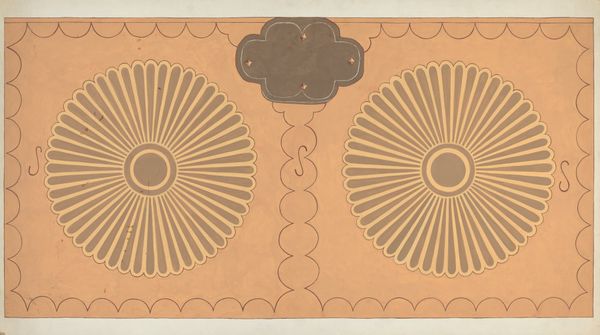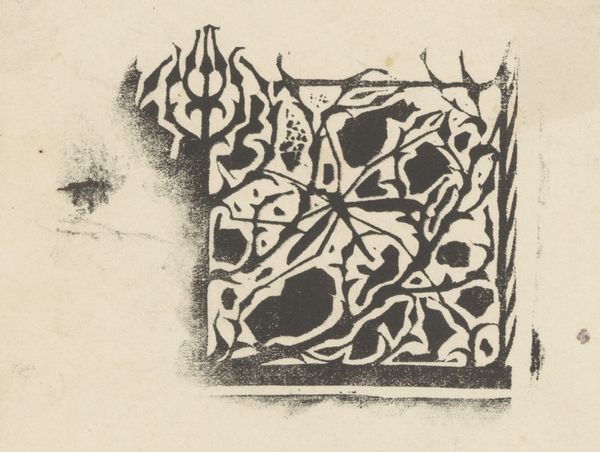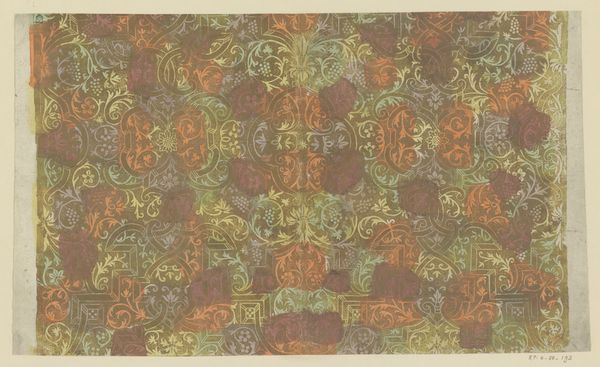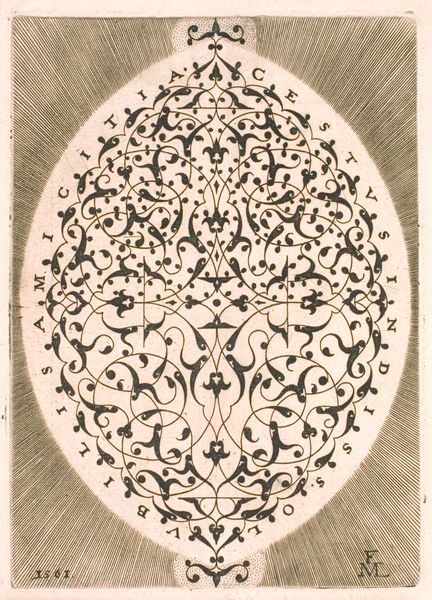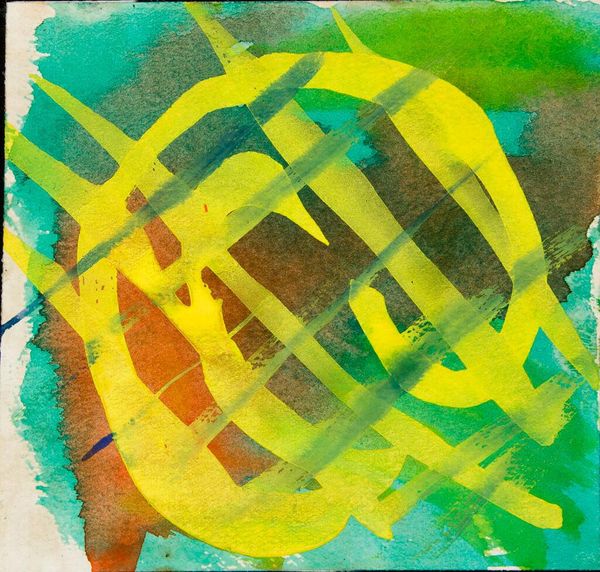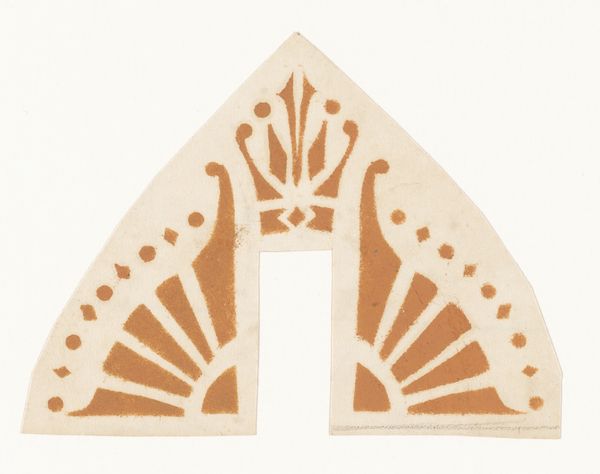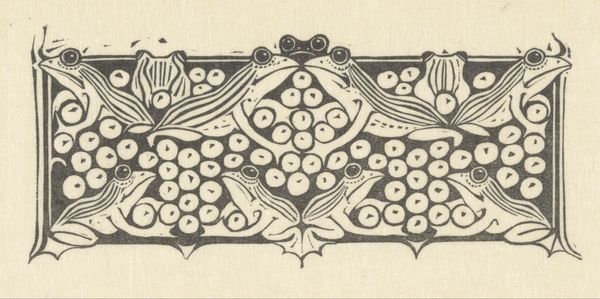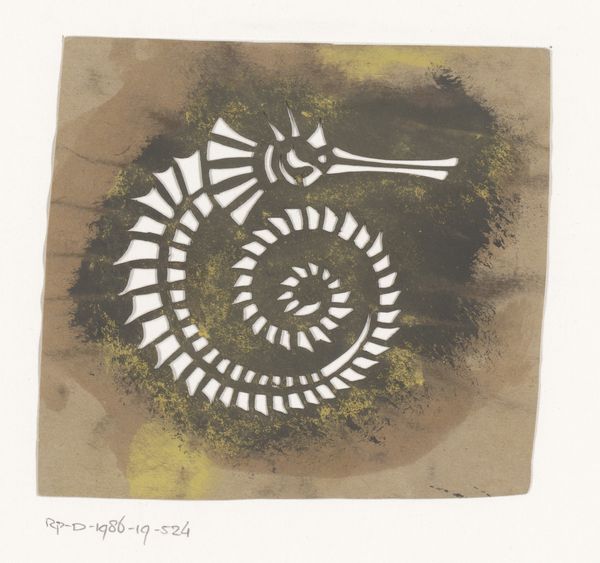
print, stencil
#
organic
# print
#
stencil
#
linocut print
#
organic pattern
#
geometric
Dimensions: height 201 mm, width 170 mm
Copyright: Rijks Museum: Open Domain
Editor: This is "Sjabloon met monogram CHJ," a stencil by Reinier Willem Petrus de Vries, made sometime between 1884 and 1952. It’s a print, and it looks almost like an architectural fragment. There is an organic pattern which could be viewed as symmetrical or geometric, with a repeated arch. What’s striking to you about this work? Curator: Well, immediately I’m drawn to its practical function as a stencil, a tool. How does this functional aspect influence our perception of it as art? We often separate "high" art from the applied arts or craft, but here, the line blurs. De Vries seems interested in making functional artistic works which may be used across disciplines. The "CHJ" likely stands for initials or the stencil workshop. Editor: So, its context—the workshop, the artisan's intention—shapes how we value it? Curator: Absolutely. Consider the social status of printing workshops at that time. Were they seen as hubs of artistic innovation, or simply as trades? The politics of imagery come into play. The Art Nouveau influence could signal aspirations of art’s impact on daily life. Editor: Art Nouveau feels so ornamental, and the stencil feels… practical, in its essence. Almost utilitarian. Curator: And yet, even in its utility, it’s creating something visually pleasing, meant for broad consumption and likely contributing to design across areas like textiles, architecture or even bookbinding. This challenges elitist notions of art for art's sake. How does seeing this image in the museum changes its function in modern society? Editor: That’s a fascinating point. We’re transforming it into an art object now, rather than just the tool. Curator: Exactly. And that shift in context raises crucial questions about the role of museums in shaping artistic value, as we're looking at a template rather than a final work. Editor: This has definitely changed my understanding, it has made me rethink how to categorize art with its function and how important its historical context can be to interpreting this stencil’s impact. Curator: It certainly forces us to consider how social function influences not just art's creation, but also its interpretation and later appreciation.
Comments
No comments
Be the first to comment and join the conversation on the ultimate creative platform.
